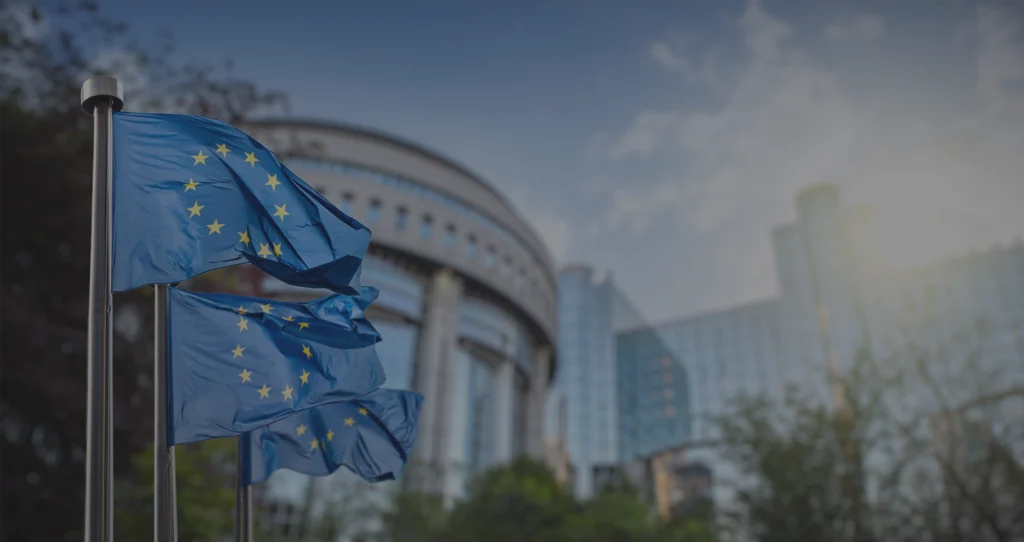Update: The European Commission has signaled another potential one-year delay to the EUDR’s application timeline. While this proposal still requires discussion with Parliament and Council, if confirmed, it would shift the current enforcement deadline from December 30, 2025 to December 2026. However, companies should not take this as a reason to pause. Building resilient, deforestation-free supply chains takes time – and any delay only extends the window for preparedness instead of eliminating the obligation.
Up to 4% of annual turnover — that’s the price of ignoring the EU’s new deforestation rules.
The EU Deforestation Regulation (EUDR) is no longer an abstract policy. The European Commission’s new guidance (August 2025) has put the path to compliance in sharp focus. And the deadlines are not moving:
- 30 December 2025: Large and medium-sized companies must comply.
- 30 June 2026: Micro and small companies follow.
Some industry voices still hope for another extension. Don’t count on it. The guidance is designed to bring clarity, consistency, and enforcement readiness.
Beyond Compliance: The Strategic Lens
EUDR applies to seven core commodities — beef, cocoa, coffee, palm oil, soy, wood, and rubber. These are also the very goods driving Scope 3.1 emissions, which represent a huge share of corporate carbon footprints.
That means EUDR is more than a regulatory box-tick. It’s a lever to:
- Strengthen CSRD reporting with verified supplier data.
- Enhance resilience by knowing exactly where your raw materials originate.
- Protect brand reputation by demonstrating transparency before activists and customers ask.
Treat compliance as a catalyst, not a cost.
What the New Guidance Clarifies
The August 2025 document doesn’t change the regulation, but it does explain how to apply it in practice:
- Definitions that matter: What counts as “placing on the market”, “making available”, or “exporting” is now spelled out. So is the difference between an “operator” and a “trader.”
- Due diligence expectations: Companies must prove their goods aren’t linked to land deforested after 31 December 2020, supported by geolocation data.
- Risk categories explained: Concepts like “negligible risk” are now given concrete examples.
- Composite products covered: Even if you only use EUDR-relevant inputs as part of a finished product, the rules still apply.
- Certifications help, but don’t replace due diligence: FSC, RSPO, or Rainforest Alliance may support risk assessment, but won’t shield you from legal obligations.
The Real Risk: Cost of Inaction
Waiting for full national implementation is tempting, but dangerous. The Cost of Inaction (COI) is real:
- Scrambling late drives up compliance costs.
- Gaps in supplier data erode CSRD credibility.
- Failure to prepare leaves you open to reputational damage, boycotts, or disruption.
The winners will be those who move early, embed risk management into procurement, and turn compliance into competitive advantage.
What to Do Now
Use the guidance as your starting playbook:
- Map exposure: Do you rely on EUDR-covered commodities? From where?
- Assess regional risk: Build a view of deforestation risk by geography.
- Push suppliers for data: Geolocation disclosure is non-negotiable.
- Use certifications as indicators: But don’t mistake them for proof.
- Build defensible systems: Create a due diligence process that’s audit-ready and aligned with both EUDR and CSRD.
The Real Risk: Cost of Inaction
Waiting for full national implementation is tempting, but dangerous. The Cost of Inaction (COI) is real:
- Scrambling late drives up compliance costs.
- Gaps in supplier data erode CSRD credibility.
- Failure to prepare leaves you open to reputational damage, boycotts, or disruption.
The winners will be those who move early, embed risk management into procurement, and turn compliance into competitive advantage.
The Bottom Line
The EUDR is not just another compliance burden. It’s a forcing function for supply chain transparency, emissions management, and brand trust.
By acting now, companies can do more than avoid fines, they can build supply chains that are resilient, sustainable, and future-proof.





